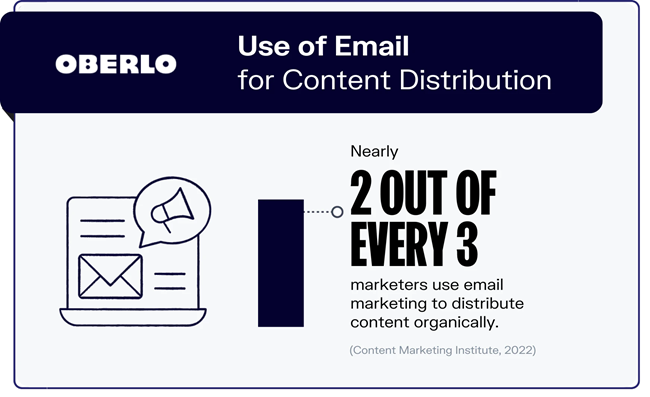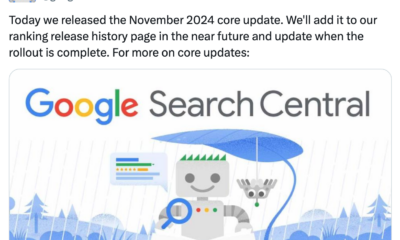MARKETING
7 Unique Tools to Find Anyone’s Email Address Instantly

Emailing has been one of the most preferred forms of business communication. Nearly 2 out of 3 marketers use email marketing for organic content distribution.
However, when it comes to that, it becomes essential to build your email lists. This is where email finder tools come into the picture.
In this article, we will talk in detail about different email finder tools you can use to find anyone’s email address instantly.
What Is an Email Finder Tool?
Email discovery solutions streamline locating and validating email contacts for cold outreach by eliminating most of the manual labour involved.
Basically, you don’t want your emails to land in spam folders. However, people tend to filter out their emails to stop receiving spam emails. Using an email finder tool is just one of the ways to ensure your emails do not reach the spam folder and instead land in the appropriate individual’s inbox.
Companies and government agencies must often compile hundreds or thousands of email address lists. They could find these instruments useful in accomplishing their goal.
An email search tool might be a lifesaver if you’re a solo entrepreneur or run a small company and check a dozen or more email accounts monthly. Among its numerous applications is the creation of new email distribution lists and the verification of existing ones.
Why should you use a tool to find an email address?
To make sure your email reaches the intended recipient and to find out the truth, you can use an email finder.
You don’t need to explain the point of your email. You wouldn’t want all of your hard work on a well-crafted email to go for nothing if you accidentally sent it to the incorrect mailbox. The recipient must get the email in their inbox before they may read it and act on it.
Your sender reputation may suffer if you routinely send emails to the incorrect individuals. If your sender’s reputation drops, you might experience email flagging, which can hamper your entire email marketing goals and ideas.
If you send an email to the incorrect address, the receiver may not see it until they check their spam folder. Expect a decline in open and click-through rates, among other things, if your sender score continues to decline.
Sending an email to an incorrect address will have the same negative impact on your sender’s reputation as it had before. None of the recipients you specified in your email list has received it. Furthermore, it’s a pain to deal with.
With today’s technical development level, your firm will likely survive if just a tiny percentage of your emails are delivered. The manual process of discovering emails might be automated with the help of software, saving your company time and money.
How to Use Email Finder Tools?
Finding an email address is simple with the help of a programme. You may receive the most relevant results by entering those details if you know the person’s name and where their website is hosted. The remaining tasks will be completed using state-of-the-art equipment.
The finest email address search tools allow you to run a bulk domain search by uploading a list of names and domains, making them ideal for when you need to discover a large number of email addresses rapidly. If you want to respond fast or add additional persons to the distribution list, you can do so with only a few clicks of the mouse after reading the article.
1. Snov.io
When trying to track down an email, Snov.io is the best tool available. You may automatically reach out to cold leads with the help of Snov.io. There are several features that every company might benefit from using.
Users of Snov.io may do name and domain searches alone or collectively, as appropriate. When you’re done, you can use Snov.io email campaigns to deliver cold emails to the individuals on your newly created contact list.
How does it work?
Snov.io has a wide range of potential applications. In the same way that other email finders provide results when you input a domain name and a prospect’s name, Snov.io does the same thing.
Pros:
- Lists of leads may be exported to a variety of formats, including CSV, XLS, and Google Sheets (for all paid plans)
- There is an email tracking system, an email validation system, and a drip email marketing system, all included in the bundle.
Cons
- Snovio users have complained about the service.
- Each contact’s least-used email address is concealed.
2. Hunter.io
In the early days of email finder, Hunter.io was one of the first applications to assist users in tracking down lost messages. Each day, Hunter will do an online search to locate the email addresses of relevant individuals at certain businesses. After that, Hunter stores this data in a repository from which he may get it later.
How does it work?
You may get access to Hunter’s offerings through the website, a Chrome extension, or a Google Sheets add-on. All of them are easy to get your hands on and set up. After settling on a plan of action, you must put the firm or person’s name into the search field and hit enter. Hunter may deduct a credit from your balance if it verifies that the email address you provided belongs to a legitimate person.
Pros:
- Advantages include an API (application programming interface) and a business subscription package.
- Tools like an email tracking system, campaign sending platform, and drip campaign designer may be available online.
Cons:
- You can’t pay someone else to verify the authenticity of the leads.
- One major drawback is that it is incompatible with the professional networking site LinkedIn.
3. VoilaNorbert
VoilaNorbert is unquestionably the greatest email finder available today for its simplicity and reliability.
How does it work?
First, provide Norbert with the websites, input them manually, import them from a CSV file, or use the Chrome extension/web app! When everything is finished, Norbert will send an email. Norbert will assign each email a “sure” score that indicates how sure he is that it’s in your inbox.
Pros:
- Ability to create a profile for a set.
- Creating an email marketing campaign, disseminating information through drip emails, and monitoring such programme
Cons:
- You may not discover any email addresses, or the ones you find won’t send messages.
- If Chrome has too many tabs open, the extension will be disabled.
4. Find That Email
The name “Find That Email” implies that it may be used to accomplish just that—find emails. The “Yellow Pages of Email,” as Find That Email’s bulk email finder and Chrome plugin are known, may help you locate contacts across various social media platforms. There’s a prominent claim that this site is the “Yellow Pages of Email” on the landing page.
How does it work?
More than 500 different programmes are compatible with the software, and it can validate email addresses as well. Find That Email’s free tier allows you to earn up to 50 monthly Find Credits.
Pros:
- Having the ability to create a profile for a team
- A service that routinely checks one’s Email
Cons:
- You can’t utilise any API (programming interface).
- Many claim that you cannot utilise this to track down old messages in your inbox.
Other Email finder tools
1. ContactOut
The ContactOut Google Chrome extension may help you locate professional email addresses. There are 1 billion addresses in the database, and the business claims that 75% of Western professionals may be reachable via them.
2. SellHack
The sales, marketing, and human resources departments may easily find new customers using SellHack. The app’s real-time email verification procedure consists of 12 steps designed to assist users in locating accurate contact data.
3.RocketReach
Email addresses for 450 million professionals at 17 million businesses are available with the RocketReach Chrome extension. Users may refine their searches based on various criteria, including proximity to a specified location or keywords.
It Is, After All, Not That Difficult to Find An Email Address!
Companies and government agencies often generate lists of email addresses in the hundreds or thousands. If you run a small company or run a solo operation and handle a dozen or more email accounts, investing in an email search tool may be the wisest move you make.











You must be logged in to post a comment Login